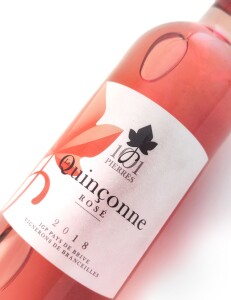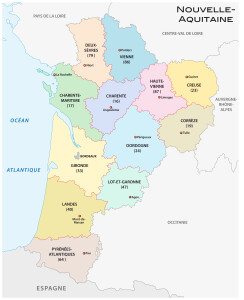France has approved a new protected geographical indication for wine: The Pays de Brive PGI. The newly classified area produces dry, still (non-sparkling) wines in red, white, and rosé as well as sweet white wines.
The region’s white wines may be produced using Chardonnay, Chenin Blanc, Sauvignon Blanc, Sauvignon Gris, Sémillon, or Muscat Blanc à Petits Grains. They may be produced as varietal wines or blends.
According to the Cahier des Charges, the white wines of the Pays de Brive PGI should be pale yellow in color with green reflections, with aromas of fruit and flowers. On the palate, they are “fruity, mineral, powerful, and lively.” Semi-sweet (moelleux) and sweet (doux) white wines (produced from the same slate of grape varieties) show aromas of yellow fruit (quince, peach), citrus (lemon, mandarin orange), and honey.
The red and rosé wines of the Pays de Brive PGI may be produced using the following well-known grape varieties: Cabernet Sauvignon, Cabernet Franc, Malbec (Cot), Merlot, Gamay, Pinot Noir, and Tannat. Other—more obscure—approved varieties include Jurançon Noir (a natural Folle Blanche X Malbec cross) and Ségalin (a Jurançon Noir X Portugieser cross created by Paul Truel in 1957). Red and rosé wines may be produced as varietal wines or blends.
According to the Cahier des Charges, the red wines of the area tend to be rich, powerful, and ruby-to-garnet in color. Typical aromas include black current, spice, and candied fruit. Rosés—which may be light in color (and flavor) or darker and richer (dusty rose/pink) in color and flavor—are fruity, floral, and lively.
The Pays de Brive PGI covers the entirety of the Corrèze Department, located in Southwest France (Nouvelle-Aquitaine), somewhat inland (east) of Bordeaux. Long-time readers may recall that a portion of the area was previously covered by the Vins de la Corrèze IGP before it received a “promotion” and was re-invented as the Corrèze AOC (in 2017). The Pays de Brive PGI covers a wider region and has a much longer list of approved grape varieties and wine styles than the stricter (and smaller) Corrèze AOC.
The region takes its name from the area’s largest town, the commune of Brive-la-Gaillarde (population: 50,000). During World War II, Brive-la-Gaillarde was a center of the Resistance; in 1944, it became the first city of Occupied France to liberate itself without outside assistance.
Welcome to the World, Pays de Brive PGI!
References/for more information:
- Cahier des Charges Pays de Brive
- On the INAO website: https://www.inao.gouv.fr/eng/produit/14110
Post authored by Jane A. Nickles…your blog administrator: jnickles@societyofwineeducators.org


Excelente información muchas gracias